C.L. Francisco's Blog, page 9
June 1, 2014
Of Time and Faith
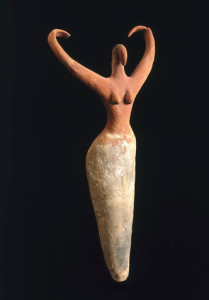
Pre-Dynastic Egypt, photo NYTimes
My recent immersion in ancient Egyptian art (for A Cat Out of Egypt) has reminded me of the many hours I’ve spent roaming happily through the art of the Ancient Near East–as far back in human history as the Stone Age years (roughly 50,000 to 10,000 BCE). Just in surveying the history of Egypt, I’ve traveled through so many cultures so quickly that thoughts on the nature of cultural change have finally stopped me in my tracks. So today I want to share with you some of my wandering thoughts on time, change, and Western culture, born of encounters with the work of long-dead artists.
 Before Einstein turned science on its head, people in Western culture tended to picture time as a single line which connected the beginning and end of all things. This is no longer the case, at least among scientists. The idea of linear time emerged from the early cultures of the Ancient Near East and was essential to Judaism’s understanding of reality. Judeo-Christian culture embraced linear time as its own, and structured history and reality accordingly. Wherever the Church—and later Western culture—extended its influence through colonialism and conversion, linear time was a non-negotiable part of the package.
Before Einstein turned science on its head, people in Western culture tended to picture time as a single line which connected the beginning and end of all things. This is no longer the case, at least among scientists. The idea of linear time emerged from the early cultures of the Ancient Near East and was essential to Judaism’s understanding of reality. Judeo-Christian culture embraced linear time as its own, and structured history and reality accordingly. Wherever the Church—and later Western culture—extended its influence through colonialism and conversion, linear time was a non-negotiable part of the package.

Chartres Labyrinth, photo by Maksim
But many cultures prior to Judeo-Christian contact tended toward circular or spiraling ideas of time. These ideas took various forms, from the cyclical rebirth of the entire universe to models more directly reflecting the turning seasons and skies. Cycles of death and rebirth were generally part of these worldviews, but for those of us firmly planted in a linear model of time appreciating these other models can be difficult.
Oddly enough, I can offer an example of time as a circle/spiral from my own experience. I’ve always thought in images. So if I thought of time, I pictured it, just as I did everything else. For as long as I can remember, at least back into my elementary school years, whenever I’ve tried to recall memories in sequential order, I’ve imagined years as circles in an ascending counterclockwise spiral. Winter begins each new circle at the top, moving into spring on the left, summer at the bottom side, and fall on the right, all rising toward a new winter and a new circle on the upward spiral. The spiral’s circles are formed of rather misty mosaics of memory-images from the seasons and events of the year. I offer this example simply to suggest that if a thoroughly Western child of elementary-school years could spontaneously create such a circular model—one that persists on into adulthood alongside a standard linear model of time—then cyclical time might not be all that alien to any of us.
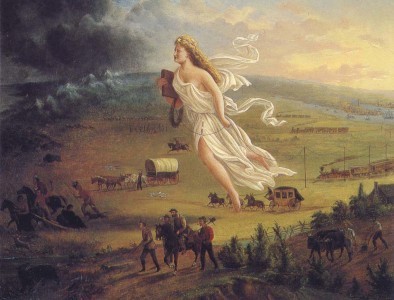
“American Progress,” John Gast, 1872
Linear time as the Church concretized it in Christian doctrine defined history as the stage upon which God acted to lead Creation to its divinely ordained conclusion–thus contributing, if indirectly, to the Western idea of progress. Also moving onto the stage at some point was the idea of a divinely chosen people whose own culture set the standard for all other peoples. By the 19th C, Western culture was producing theories of cultural evolution with “primitives” on the bottom and privileged Western society on the top. Immeasurable pain and violence were inflicted on other cultures as a result, and the damage is ongoing today. Although most reputable scholars rejected such ideas of cultural evolution by the mid-20th C, similar notions do still linger in the popular mind. Almost any person raised within a Western worldview is, at the very least, a carrier of embryonic presuppositions regarding progress and “primitivism,” whether they wish to carry them or not. It’s in the air, in our mothers’ milk.
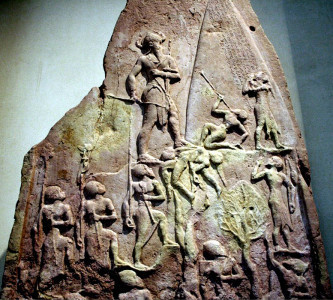
Akkadian victory stele, 2250 BCE
So what does all this have to do with my journeys through ancient art? Well, I found myself asking, “Why do cultures change?” When Stone Age humans began domesticating animals, was it “development,” “progress,” or simply change based on circumstances we can’t see clearly today? Cultural change that led to dynastic civilizations and large-scale warfare can only be called progress (with any certainty) if where we stand today is the intended and best possible result in an overall plan of history. When Neolithic groups moved toward urbanization and the beginnings of metallurgy, was it progress, or simply change? What other paths existed in prehistory as possibilities—what waves had not yet collapsed? In Western Asia and Eastern Europe cultures adhering to traditional ways disappeared—or were wiped out by the widespread wars, plagues, and famines of the last half of the Bronze Age. And here a possibility began to grow in my mind.
 I considered the course of events in recent centuries when Traditional, or Earth-based, cultures encountered Western civilization. One thing I had never considered before now demanded my full attention: African Traditional peoples, Native Americans, South Sea Islanders, Aborigines—these peoples did not progress, or develop, or evolve—their cultures were annihilated. They were not in the process of change when first contact was made. Change was not offered to them as an option. Whether they were killed with weapons, pestilence, starvation, or all three together, their cultures were extinguished. Greed for land and resources, brutally efficient weaponry with the sense of power born of it, and the tantalizing possibility of “might makes right”—these human factors undergirded the conquest of “new worlds.” Would it be unreasonable to suppose that these same human factors sealed the fate of indigenous peoples whose lands adjoined the Fertile Crescent and the civilization it cradled?
I considered the course of events in recent centuries when Traditional, or Earth-based, cultures encountered Western civilization. One thing I had never considered before now demanded my full attention: African Traditional peoples, Native Americans, South Sea Islanders, Aborigines—these peoples did not progress, or develop, or evolve—their cultures were annihilated. They were not in the process of change when first contact was made. Change was not offered to them as an option. Whether they were killed with weapons, pestilence, starvation, or all three together, their cultures were extinguished. Greed for land and resources, brutally efficient weaponry with the sense of power born of it, and the tantalizing possibility of “might makes right”—these human factors undergirded the conquest of “new worlds.” Would it be unreasonable to suppose that these same human factors sealed the fate of indigenous peoples whose lands adjoined the Fertile Crescent and the civilization it cradled?
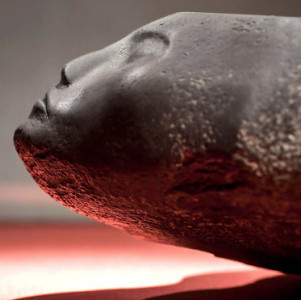
Bound Captive, Early Dynastic, Egypt, photo NYTimes
This line of thought led to disturbing questions often debated among academics—but for me, these questions have become personal. What is progress? Does it really exist? Why is change a good thing, if an existing situation is good already? Is it possible that unlovely traits like greed, abusive power, and fear have always been the most common motive forces in human change?

Movie “Avatar,” idealized indigenous people
Now that the Western world is beginning to perceive the number and variety of plagues spawned in its long shadow, some people have begun to look with yearning and regret at Earth’s remaining Indigenous peoples. Unfortunately, when we look we tend to see through the lenses of our own worldview, darkly. We do not see these fellow-humans as people who belong to themselves, with their own lives and concerns, but as solutions to our problems, romanticized projections of our notions of a paradisal age.
Perhaps wisdom remains for the healing of the Earth. Perhaps sustainability is something we can learn. Perhaps if we ask with respect, elders may share their wisdom. But first we of Western culture need to look to our own house.
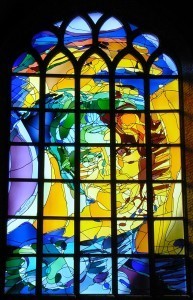
Stained glass window “Jairus’ daughter” by Annemiek Punt, photo
Beckstet
Professor and historian E. Glenn Hinson first introduced me to the thought of Teilhard de Chardin, a French priest and philosopher of the first half of the 20th century whose reflections on God and history led to repeated censures by the Catholic Church. But the one piece of his thought that burst into my world like a supernova was his assertion that God has given the future of the Earth into human hands: if we don’t take responsibility for our world, God won’t step in with an exasperated sigh and clean up the mess. In the Apostle Paul’s words, we must work out our own salvation with fear and trembling (Phil 2:12). “Progress” does not necessarily reflect God’s will, nor does God necessarily “will” what is happening in our world today. Christ has pointed the way in love, and the Holy Spirit strengthens us as we labor, but if we don’t work for the salvation of all God’s creation, humanity’s end times may be grim indeed.
.
.
May 15, 2014
Manners, the phenomenologist, and the church lady
In the unaccustomed calm after finishing A Cat Out of Egypt, I’ve been thinking about a process I use in diving into ancient cultures, and how much a part of my thinking it’s become. A great deal of what makes writing fiction possible for me is a discipline I learned from Dr. John N. Jonsson, an extraordinary professor from graduate school: phenomenology. Never heard of it? My recent reflections can take care of that!
After a meeting not long ago with some seriously incompatible new acquaintances, a friend clapped me on the back and said, “Hey, great job with the chit-chat! You must have been doing your phenomenologist thing, acting like you believed every word they said. I didn’t know what to say.”
The comment completely blindsided me. I had taken on a different persona, hoping it might get me through the conversation without offending anyone, but it was a role I had learned growing up among remnants of the Old South—not as a graduate student in world religions. Far from employing a phenomenologist’s skill at participant observation, I had donned the mask of a Southern lady. Yet, my actions looked to my friend like phenomenological techniques.

Photo by evietom
If I vastly oversimplified the definition of a field phenomenologist, I might say it’s someone who observes the behaviors and practices of another culture while suspending her own cultural bias. As a participant observer, she learns by blending into the observed culture, accepting it as if it were her own, attempting to experience all its phenomena with the eyes of one born to it. She applies no preconceived standards of right and wrong, true and false, good and evil. A phenomenologist does her best to understand a culture and its people on their own terms.
 I grew up among Southern Baptist seminary faculty families, where gentle wives from all across the Deep South, born in the early decades of the 20th century, dedicated themselves to being helpmeets and hostesses for their reverend-doctor husbands. In the company of the most accomplished of these ladies, voices were never raised in anger or disagreement, and guests in one’s home were treated like Abraham’s visiting angels. Peculiarities, absurdities, poor manners, and even rudeness were met with smiles, tolerance, and seemingly rapt absorption. These paragons of Southern virtue never succeeded in converting me to their vision of Southern gentility, but I knew the drill—and I can still produce a recognizable facsimile on demand, as long as I don’t have to keep it up for too long.
I grew up among Southern Baptist seminary faculty families, where gentle wives from all across the Deep South, born in the early decades of the 20th century, dedicated themselves to being helpmeets and hostesses for their reverend-doctor husbands. In the company of the most accomplished of these ladies, voices were never raised in anger or disagreement, and guests in one’s home were treated like Abraham’s visiting angels. Peculiarities, absurdities, poor manners, and even rudeness were met with smiles, tolerance, and seemingly rapt absorption. These paragons of Southern virtue never succeeded in converting me to their vision of Southern gentility, but I knew the drill—and I can still produce a recognizable facsimile on demand, as long as I don’t have to keep it up for too long.
The more I think about it, my Church Lady and a working phenomenologist do have things in common. Each would greet a manure-encrusted ascetic with the same apparent obliviousness to his odor and appearance. Both would discuss the certain existence of winged hippopotami without batting an eye if the subject were seriously introduced. Neither would contradict beliefs that they personally believed to be nonsense. Each would do her best to allow others to hold center-stage. Dedication to inconspicuousness and the ease of others characterize both roles. Intelligence and focus are essential to both, and each employs a certain amount of deceit, even if benign.
But they are certainly not the same. A skilled phenomenologist blends into her environment with a kind of protective coloration that allows her to appear to belong where she does not. But a Southern lady actively controls her environment with a mixture of charm and solicitude learned at her mother’s knee. The phenomenologist is a loner looking in, but the lady nests securely in the heart of her society’s hearth and home.

An ocelot’s protective coloration
I suppose I was disturbed by my friend’s remark because my actions had been unconscious: I had unwittingly taken on the manners of a Southern lady, and used those manners as a phenomenologist would—as protective coloration. I certainly can’t claim the identity as my own, since I’m no longer living in the vanished culture of the Old South, and in any case, I never abided by its rules. Yet neither was I acting as a phenomenologist, attempting to submerge myself in our visitors’ world in order to understand it. I simply adopted a persona to keep the peace and avoid unpleasantness.
But isn’t that what manners have always accomplished? The dilemma in my meeting was that no common etiquette existed for all parties involved. We came from different worlds, although we lived only a few miles apart.
In a time of increasing multiculturalism, rapid change, and widespread individualism, few can rely on old standards and manners to smooth social situations. In a sense, we are all being asked to become self-taught phenomenologists flying by the seat of our pants. But no one living in an urban area is going to learn the social cues of every group they might encounter, from street people to suburban Episcopalians to recent immigrants, to American-born ethnic minorities.
Dear Abby and Miss Manners have been the butts of endless jokes for many years, and rightly so. They have tried to wrap outdated rules of etiquette around America’s diverse population like straightjackets. But what alternatives do we have? Those of us who find ourselves in conversation with people whose ideas and behavior seem at best bizarre, and at worst . . . who can say?
Going back to our meeting, what did my friend see me doing? I was listening. When I asked questions, I did so for clarification, not attack. I didn’t contradict statements I knew or suspected were wrong. I was patient. I expressed interest in our guests’ lives and doings. I complimented them on their successes, and when I was stunned into speechlessness, I just smiled. Consciously, I was mimicking a Southern lady on her best behavior. But unwittingly, perhaps I was just giving our guests room to be
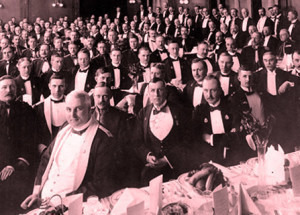 I am not offering the Southern lady as a model for us today. Like anyone fulfilling a social role, she helped maintain the status quo of her society—which in the South meant preserving the privilege and power of select white men at the expense of women, minorities, and working people. Life in the South could be bitter for the disenfranchised. I am saying that my rather haphazard reenactment of a remembered role resulted in unexpected success with both guests and co-workers.
I am not offering the Southern lady as a model for us today. Like anyone fulfilling a social role, she helped maintain the status quo of her society—which in the South meant preserving the privilege and power of select white men at the expense of women, minorities, and working people. Life in the South could be bitter for the disenfranchised. I am saying that my rather haphazard reenactment of a remembered role resulted in unexpected success with both guests and co-workers.
 Just as so many of us have lost our sense of connection to the Earth and our non-human relations, we have also lost touch with our extended human family. Individualism may have brought us relief from oppressive social control, but it has also divided us from each other. Dualism, with its gulf between the human and natural worlds, may have fueled industry and urban growth, but its unforeseen results have been devastating. When we see the world around us as nothing more than raw materials for our own consumption, we shouldn’t be surprised that “real” humans become fewer and fewer, until often the only one who truly matters is oneself.
Just as so many of us have lost our sense of connection to the Earth and our non-human relations, we have also lost touch with our extended human family. Individualism may have brought us relief from oppressive social control, but it has also divided us from each other. Dualism, with its gulf between the human and natural worlds, may have fueled industry and urban growth, but its unforeseen results have been devastating. When we see the world around us as nothing more than raw materials for our own consumption, we shouldn’t be surprised that “real” humans become fewer and fewer, until often the only one who truly matters is oneself.
One basic assumption of phenomenology is that common patterns underlie all human behavior, and that if we understand each culture well enough, we can identify those commonalities. But understanding comes first—and it will never come unless we grant other people’s behavior the same respect we give our own. Maybe at the end it all comes down to variations on the golden rule: however you hope to be treated, offer that same consideration to others.

Let It Be, by Andy Saczynski
Respect can breed respect.
Manners, the phenomenologist, and the church lady
In the unaccustomed calm after finishing A Cat Out of Egypt, I’ve been thinking about a process I use in diving into ancient cultures, and how much a part of my thinking it’s become. A great deal of what makes writing fiction possible for me is a discipline I learned from Dr. John N. Jonsson, an extraordinary professor from graduate school: phenomenology. Never heard of it? My recent reflections can take care of that!

After a meeting not long ago with some seriously incompatible new acquaintances, a friend clapped me on the back and said, “Hey, great job with the chit-chat! You must have been doing your phenomenologist thing, acting like you believed every word they said. I didn’t know what to say.”
The comment completely blindsided me. I had taken on a different persona, hoping it might get me through the conversation without offending anyone, but it was a role I had learned growing up among remnants of the Old South—not as a graduate student in world religions. Far from employing a phenomenologist’s skill at participant observation, I had donned the mask of a Southern lady. Yet, my actions looked to my friend like phenomenological techniques.

Photo by evietom
If I vastly oversimplified the definition of a field phenomenologist, I might say it’s someone who observes the behaviors and practices of another culture while suspending her own cultural bias. As a participant observer, she learns by blending into the observed culture, accepting it as if it were her own, attempting to experience all its phenomena with the eyes of one born to it. She applies no preconceived standards of right and wrong, true and false, good and evil. A phenomenologist does her best to understand a culture and its people on their own terms.
 I grew up among Southern Baptist seminary faculty families, where gentle wives from all across the Deep South, born in the early decades of the 20th century, dedicated themselves to being helpmeets and hostesses for their reverend-doctor husbands. In the company of the most accomplished of these ladies, voices were never raised in anger or disagreement, and guests in one’s home were treated like Abraham’s visiting angels. Peculiarities, absurdities, poor manners, and even rudeness were met with smiles, tolerance, and seemingly rapt absorption. These paragons of Southern virtue never succeeded in converting me to their vision of Southern gentility, but I knew the drill—and I can still produce a recognizable facsimile on demand, as long as I don’t have to keep it up for too long.
I grew up among Southern Baptist seminary faculty families, where gentle wives from all across the Deep South, born in the early decades of the 20th century, dedicated themselves to being helpmeets and hostesses for their reverend-doctor husbands. In the company of the most accomplished of these ladies, voices were never raised in anger or disagreement, and guests in one’s home were treated like Abraham’s visiting angels. Peculiarities, absurdities, poor manners, and even rudeness were met with smiles, tolerance, and seemingly rapt absorption. These paragons of Southern virtue never succeeded in converting me to their vision of Southern gentility, but I knew the drill—and I can still produce a recognizable facsimile on demand, as long as I don’t have to keep it up for too long.
The more I think about it, my Church Lady and a working phenomenologist do have things in common. Each would greet a manure-encrusted ascetic with the same apparent obliviousness to his odor and appearance. Both would discuss the certain existence of winged hippopotami without batting an eye if the subject were seriously introduced. Neither would contradict beliefs that they personally believed to be nonsense. Each would do her best to allow others to hold center-stage. Dedication to inconspicuousness and the ease of others characterize both roles. Intelligence and focus are essential to both, and each employs a certain amount of deceit, even if benign.
But they are certainly not the same. A skilled phenomenologist blends into her environment with a kind of protective coloration that allows her to appear to belong where she does not. But a Southern lady actively controls her environment with a mixture of charm and solicitude learned at her mother’s knee. The phenomenologist is a loner looking in, but the lady nests securely in the heart of her society’s hearth and home.

An ocelot’s protective coloration
I suppose I was disturbed by my friend’s remark because my actions had been unconscious: I had unwittingly taken on the manners of a Southern lady, and used those manners as a phenomenologist would—as protective coloration. I certainly can’t claim the identity as my own, since I’m no longer living in the vanished culture of the Old South, and in any case, I never abided by its rules. Yet neither was I acting as a phenomenologist, attempting to submerge myself in our visitors’ world in order to understand it. I simply adopted a persona to keep the peace and avoid unpleasantness.
But isn’t that what manners have always accomplished? The dilemma in my meeting was that no common etiquette existed for all parties involved. We came from different worlds, although we lived only a few miles apart.
In a time of increasing multiculturalism, rapid change, and widespread individualism, few can rely on old standards and manners to smooth social situations. In a sense, we are all being asked to become self-taught phenomenologists flying by the seat of our pants. But no one living in an urban area is going to learn the social cues of every group they might encounter, from street people to suburban Episcopalians to recent immigrants, to American-born ethnic minorities.
Dear Abby and Miss Manners have been the butts of endless jokes for many years, and rightly so. They have tried to wrap outdated rules of etiquette around America’s diverse population like straightjackets. But what alternatives do we have? Those of us who find ourselves in conversation with people whose ideas and behavior seem at best bizarre, and at worst . . . who can say?
Going back to our meeting, what did my friend see me doing? I was listening. When I asked questions, I did so for clarification, not attack. I didn’t contradict statements I knew or suspected were wrong. I was patient. I expressed interest in our guests’ lives and doings. I complimented them on their successes, and when I was stunned into speechlessness, I just smiled. Consciously, I was mimicking a Southern lady on her best behavior. But unwittingly, perhaps I was just giving our guests room to be
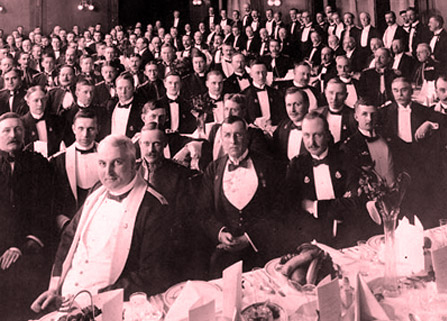 I am not offering the Southern lady as a model for us today. Like anyone fulfilling a social role, she helped maintain the status quo of her society—which in the South meant preserving the privilege and power of select white men at the expense of women, minorities, and working people. Life in the South could be bitter for the disenfranchised. I am saying that my rather haphazard reenactment of a remembered role resulted in unexpected success with both guests and co-workers.
I am not offering the Southern lady as a model for us today. Like anyone fulfilling a social role, she helped maintain the status quo of her society—which in the South meant preserving the privilege and power of select white men at the expense of women, minorities, and working people. Life in the South could be bitter for the disenfranchised. I am saying that my rather haphazard reenactment of a remembered role resulted in unexpected success with both guests and co-workers.
 Just as so many of us have lost our sense of connection to the Earth and our non-human relations, we have also lost touch with our extended human family. Individualism may have brought us relief from oppressive social control, but it has also divided us from each other. Dualism, with its gulf between the human and natural worlds, may have fueled industry and urban growth, but its unforeseen results have been devastating. When we see the world around us as nothing more than raw materials for our own consumption, we shouldn’t be surprised that “real” humans become fewer and fewer, until often the only one who truly matters is oneself.
Just as so many of us have lost our sense of connection to the Earth and our non-human relations, we have also lost touch with our extended human family. Individualism may have brought us relief from oppressive social control, but it has also divided us from each other. Dualism, with its gulf between the human and natural worlds, may have fueled industry and urban growth, but its unforeseen results have been devastating. When we see the world around us as nothing more than raw materials for our own consumption, we shouldn’t be surprised that “real” humans become fewer and fewer, until often the only one who truly matters is oneself.
One basic assumption of phenomenology is that common patterns underlie all human behavior, and that if we understand each culture well enough, we can identify those commonalities. But understanding comes first—and it will never come unless we grant other people’s behavior the same respect we give our own. Maybe at the end it all comes down to variations on the golden rule: however you hope to be treated, offer that same consideration to others.

Let It Be, by Andy Saczynski
Respect can breed respect.
.
.
May 9, 2014
Indie Reader gives Yeshua’s Cat 4 1/2 stars!
.

.
The Gospel According to Yeshua’s Cat just received its first major review!
Indie Reader gave Yeshua’s Cat 4 ½ stars and an Indie Reader approved seal! Here’s a summary:
“As a thoughtful, loving and gentle portrayal of the life of Jesus, though, THE GOSPEL ACCORDING TO YESHUA’S CAT succeeds. Open-minded readers of all faith perspectives may agree with some of it, disbelieve other parts entirely, and find some debatable, which may in fact be an ideal balance for a theological work.”
To read more, click on the Indie Reader seal in the right column.
Indie Reader gives Yeshua’s Cat 4 1/2 stars!
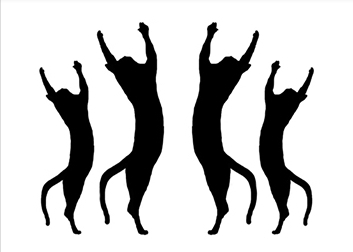
.
The Gospel According to Yeshua’s Cat just received its 1st
major review!
Indie Reader gave Yeshua’s Cat 4 ½ stars and an Indie Reader approved seal!
Here’s a summary:
“As a thoughtful, loving and gentle portrayal of the life of Jesus, though, THE GOSPEL ACCORDING TO YESHUA’S CAT succeeds. Open-minded readers of all faith perspectives may agree with some of it, disbelieve other parts entirely, and find some debatable, which may in fact be an ideal balance for a theological work.”
To read more, click on the Indie Reader button in the right column.
.
.
May 7, 2014
Kindle readers, mark your calendars!
Kindle Countdown Deal starting at $.99!
May 9-12
On Friday, May 9th, at 8 AM PST The Gospel According to Yeshua’s Cat
(Kindle edition, list price $4.99) will begin a Kindle Countdown Deal
on Amazon.com!
.
Here’s how it works:
Starting at 8 AM PST on Friday, May 9th , Yeshua’s Cat (Kindle edition) will be on sale for ONLY $.99! This special offer will be good for 24 hours.
Starting at 8 AM PST on Saturday, May 10th , Yeshua’s Cat (Kindle edition) will be on sale for ONLY $1.99! This special offer will be good for 24 hours.
Starting at 8 AM PST on Sunday, May 11th, Yeshua’s Cat (Kindle edition) will be on sale for ONLY $2.99! This special offer will be good for 24 hours.
The Countdown Deal ends at 8AM, Monday, May 12.
.
Don’t forget!
They’ll make wonderful Mother’s Day Gifts!
.

April 30, 2014
“A Cat Out of Egypt,” prequel to Yeshua’s Cat!
and now entering the editing process!
Due for release in autumn of 2014
A luminous tale drawn from the missing years of Jesus’ childhood, A Cat Out of Egypt joins the child Yeshua, with Maryam and Yosef, as they flee Egypt in the company of an escaped cat from the great temple of Bast at Bubastis.
Mark it on your calendars for Christmas!
April 16, 2014
The Speaking Stones of Easter
“If the people were silent, the very stones would cry out.” Luke 19:40
The stones are speaking. Are we listening?
The memory of stone. People have spoken of it since humankind first wielded tools to chisel its surface. What stories might be locked in the smallest of river stones, the bedrock beneath the plains’ rich soil, the mountains crushed into gravel for our roads? Certainly we find there the record of the earth’s transformations, the bones and footprints of long-dead species, delicate traceries of plants, massive forests. But what about human lives? Have stones absorbed the fleeting touch of our lately-come species, the storms of blood, tears, laughter, prayer that accompany our kind wherever we wander? Do stones remember us?

Stones of Easter: Bread
I love stone. I have loved it from earliest childhood. I love the weight and feel of it in my hand, the warmth of it beneath me when I rest from walking, the magic of its kaleidoscopic patterns. When I can I travel to mountains and canyons and deserts to spend time in its company. Stone is alive, sentient in some way I can’t explain. I feel it most strongly in wilderness, where human busy-ness is limited—but it has also caught me unawares in urban alleys.
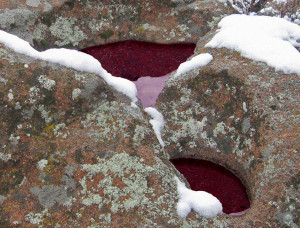
Stones of Easter: Wine. Photo by C. L. Francisco
I am unlikely ever to hear a stone speak in human words, or a tree in propositions, or a dog in iambic pentameter. A stone communicates in the manner of stones, just as a dog communicates as dogs do. My experience of the speech of stones is deeply non-verbal, partly visceral and partly emotional, untranslatable. Sometimes I take a photograph or pick up a stone when I feel it; other times I simply let it be. The imagery comes later.
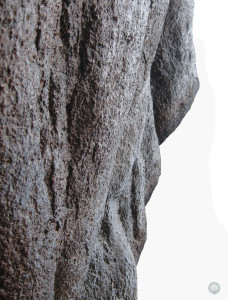
Stones of Easter: Flesh. Photo by C.L. Francisco
I am not a professional photographer, or even educated in photography. In the past I saw the images in a camera’s eye as an imagined canvas, in terms of shape and balance, tension and flow, light and dark. Now I find myself photographing scenes that pulse with the energy of subtle presence, and I let the rest take care of itself. Sometimes my pictures absorb a hint of that power, sometimes not.

Stones of Easter: Blood. Photo by C.L. Francisco
What is a photograph? At its simplest it is a record of objects seen, events observed, people known. But like history, a photograph participates in the awareness of the one who watches and records. And like a scientific experiment, the photographer’s participation is a variable that must be considered. The same scene taken by different people with identical cameras at roughly the same time may be distinctly different—based on something I call “soul,” for lack of any better term. At times the camera’s eye appears to mediate an exchange of understanding? meaning? relationship? being? between photographer and subject, and this fleeting touch (or lack of it) marks the photo.
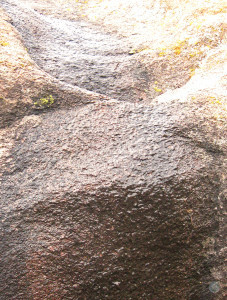
The Stones of Easter: Release. Photo by C.L. Francisco
What are the stones saying with their images? I believe they are communicating their presence, no more. “Look at us!” they cry. “We are alive, in ways you have forgotten you ever knew. We are—as the trees are, and the waters, and the atmosphere that shields the Earth from the extremes of space. Truly see us—see all of creation—we who have been dismissed by your arrogance as mere commodities. See us, before only stones remain to see the sunrise.”
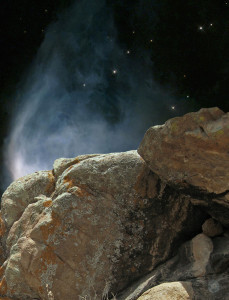
The Stones of Easter: Tomb. Photo by C.L. Francisco
Slipping unseen along the fringes of consciousness, the temptation is always there—to “clean up” the images, make them perfect, adjust their proportions to fit more neatly into Western ideas of beauty. Sometimes I make changes without thinking, and then I have to destroy the image if I can’t undo the edits. We have an implicit understanding, the stones and I—that their images will remain as I find them, removed only from their matrix, and, at most, adjusted for contrast. After all, they are the language of stone, and much is inevitably lost in translation.
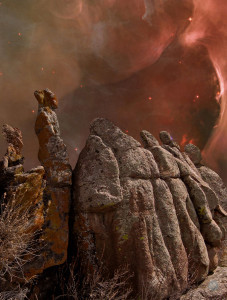
The Stones of Easter: Searching the Skies. Photo by C. L. Francisco
Many years ago I discovered a new word: panentheism. Not pantheism (many gods), not theism (usually one god separate from creation), but pan-en-theism—one Spirit present in all creation, without the great divide between spirit and flesh that seems unavoidable in most Western traditions. Perhaps this word can suggest a way to bridge the gulf between stones that speak and a planet of dead rock.
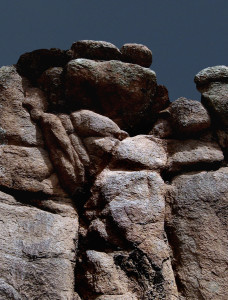
The Stones of Easter: Lament. Photo by C. L. Francisco
In Christian scripture the apostle Paul describes the perceptions of ordinary people: “For now we see in a mirror, dimly . . . .” These words could describe any human being who has lost her sense of kinship with the web of life in which she lives. We see the world distorted in a bit of poorly polished metal—and ourselves more prominently than all else. But unlike Longfellow’s Lady of Shallot, we have no curse to excuse our stubborn avoidance of the Earth’s true face.
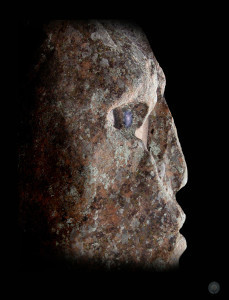
The Stones of Easter: Emergence. Photo by C. L. Francisco
Stone is patient. Stone does not envy or boast, and is neither arrogant nor rude. Stone simply is, demanding nothing. Stone is not false, but embodies the truth of creation. Stone accepts human abuse and awaits our healing. Stone endures all things, is always being transformed, yet is ever the same.

The Stones of Easter: Rolling Stone. Photo by C. L. Francisco
All the photos in The Stones of Easter series* were taken on my brother Don’s mountain during Easter week, 2010, when I was deeply immersed in writing the final chapters of The Gospel According to Yeshua’s Cat. Starting on the morning of Maundy Thursday and ending on Easter Sunday, each day I packed a lunch and water flask and set off up the mountain with my camera. In a very literal sense, I went in search of a vision.
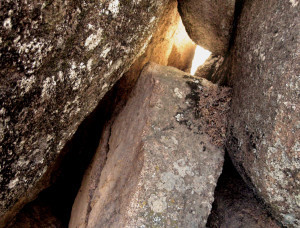
The Stones of Easter: Gone Away. Photo by C.L. Francisco
The result of the vision that met me there is Yeshua’s Cat.
And, of course, one of Wendy’s cats.
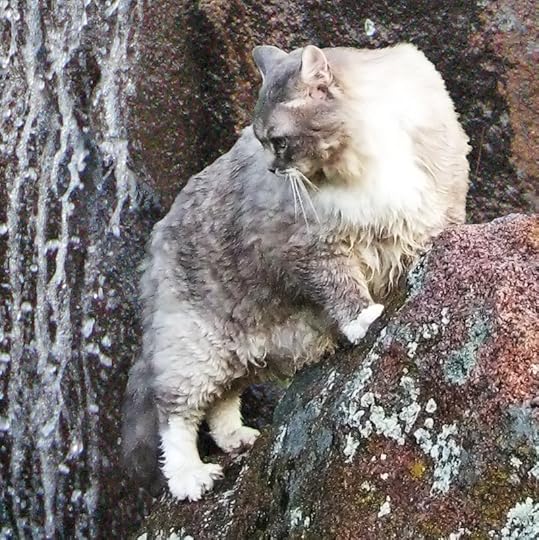
.
* Sixteen photos in The Stones of Easter series are available for sale at http://www.zazzle.com/moon_seasons. The original series included 24.
.
.
March 30, 2014
To Nazareth Village, with thanks
.

Photo, nazarethvillage.com
While I was writing Yeshua’s Cat, I watched with interest as Nazareth Village took shape both on the internet and in the town of Nazareth. In case you’ve never heard of it, it’s now an amazing full-blown tourist attraction in Israel, based (as far as I can tell) on careful archaeological and scholarly research. Because their research into 1st century architecture and culture was helpful to me in my writing, I decided that this might be a good time to return the favor.

photo, nazarethvillage.com
Finding the kind of everyday details about ancient Israel that I needed was difficult without access to a university research library–and I did my writing miles away from anywhere in the Rocky Mountains. So when I stumbled on a small website documenting the process of reconstructing a small 1st C village near Nazareth, I was delighted. I’m grateful to have discovered Nazareth Village during its formative years, when they were actively struggling with bringing a dream to birth, just as I was.
I’m a visual person, and it helps me enormously if I can really visualize the places I’m writing about–and as a retired professor, I have to be sure it’s accurate! Floor plans and ruins will work in a pinch, but accurate reconstructions are by far the best. If you look carefully through The Gospel According to Yeshua’s Cat, you can see the influence of Nazareth Village’s architectural research in three different areas: Yeshua’s skills at home repair, the structure of Keturah’s house in Capernaum, and some of the structural details of the Capernaum synagogue.
Yeshua’s house repairs
“Then without waiting for a response he bent to his task, tearing away the rotted cane and broken plaster until he could test the strength of the exposed beam underneath. I lay in the sun and thought my own thoughts while he came and went at his work, weaving cane mats to patch the holes, and mixing the first batches of mud to seal them in place. His strong hands were quick and neat at their work, and I guessed that I was watching him at one of the skills he shared with his family.” The Gospel According to Yeshua’s Cat, Chap. 5

House roof construction. Photo, nazarethvillage.com

Photo, nazarethvillage.com
The photos above show the construction techniques that resulted in the kind of roof Yeshua was working to repair for Keturah: support beams, covered by woven cane, and various layers of mud and plaster. To the right is Mari’s view of the interior ceiling before it fell on her head. This was also the roof the four friends tore apart to lower the paralyzed young man.

Photo, nazarethvillage.com
To the left you can see a plastered room similar to the one Yeshua was repairing in the following text:
“It was the morning after I had followed him to the spring, and he was chipping the crumbling plaster and mud from Keturah’s kitchen walls. He was slow to answer me, but I recognized the signs of a lengthy response in the making. I sighed. After all, I’d asked the question. He paused and looked at me where I sat across the room, out of reach of his dust.”
The Gospel According to Yeshua’s Cat, Chap. 6
.
.
Keturah’s House

Photo, nazarethvillage.com
Nazareth Village’s basic house plan (right) was similar to the one I used for Keturah’s house. You can see the entrance into the courtyard, with Keturah’s main room and bedroom. The stairs to the roof would have been at the north end of the courtyard–with the goat.
.
.
.
Below are a couple of pictures illustrating the cistern and the runoff channels that carried rainwater to it. The runoff channel on the roof is mentioned in the text:
“I took refuge on the roof and watched as people craned their necks for a glimpse of his face. From where I sat I couldn’t see much, although I did notice that the crowd parted when several elders, dressed in fine linen turbans and fringed shawls, pushed their way from the street into Keturah’s house. But my curiosity about them died abruptly at the noisy approach of several humans across the roof beyond ours. With a growl, I flattened myself into the cistern’s channel.”
The Gospel According to Yeshua’s Cat, Chap. 8

Photos, nazarethvillage.com
The synagogue
At last we come to the synagogue. There are numerous synagogue ruins in and around Israel, many dating from near the early first century, and their floor plans are very similar.
Gamla . . .

Image ESV Annotated Bible
Capernaum . . .

Image bible-lands.net
Masada . . .

But Nazareth Village created a reconstruction in three dimensions, and in full scale. Fantastic!

Exterior photo by Kluke, Panoramio. Interior photos by nazarethvillage.com
This was the synagogue I was imagining in the scene below:
“As he and his followers disappeared into the house of prayer on that Shabbat morning, I ran up the smooth bark of a great tree and jumped down onto the stone lip of the mud roof. Rising from the roof’s center were smaller stone walls with cat-sized windows all around. I leapt carefully into a window and crept through to the inside.
Far too much air hung between my feet and the floor to jump through the window. Flattening myself on the sill like a mouse in a crack, I inched my head over the inner edge and crouched there to see what I could see. Many men and women sat on stone steps around the sides of a large room, and directly below my window I could just glimpse ben Adamah’s head where he stood speaking.”
The Gospel According to Yeshua’s Cat, Chap. 6
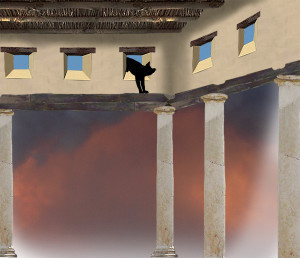
Drawing by C.L. Francisco
To the right is an image of Mari in the synagogue that never made it to the map, probably because I couldn’t quite get past the fact that she didn’t really go in!
.
From what I can tell, Nazareth Village is a great success, and visitors love it. Maybe some day I’ll visit it first hand, but for now, I’m grateful for its presence online.
.
.
.
March 28, 2014
Easter Giveaway on Goodreads!
.
The Gospel According to Yeshua’s Cat featured in a Goodreads Giveaway!
– Sign up now through April 28th –
Free books will be given to 10 lucky winners!
.
.
.









